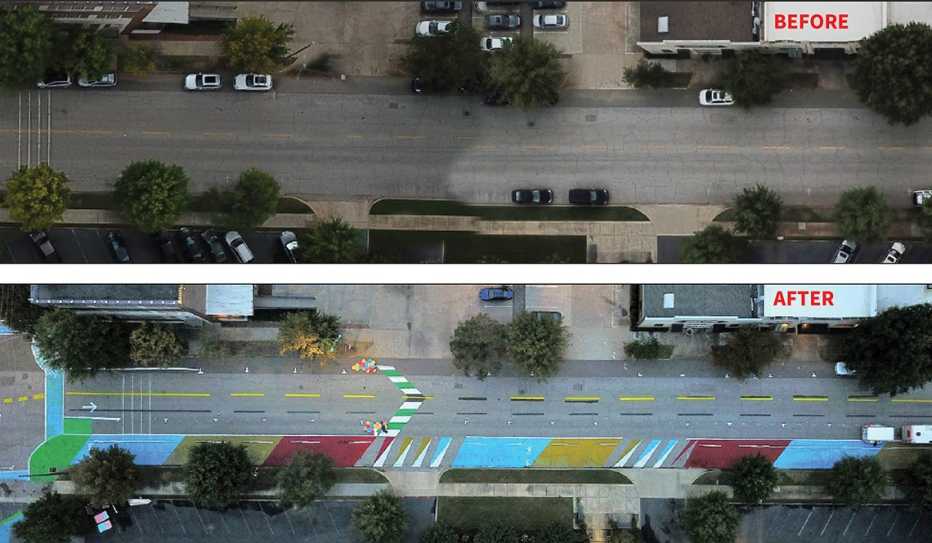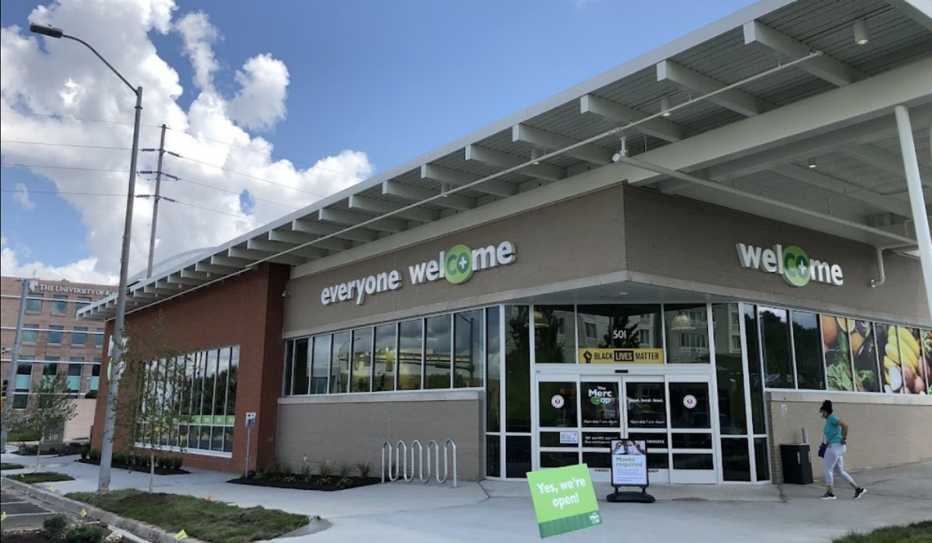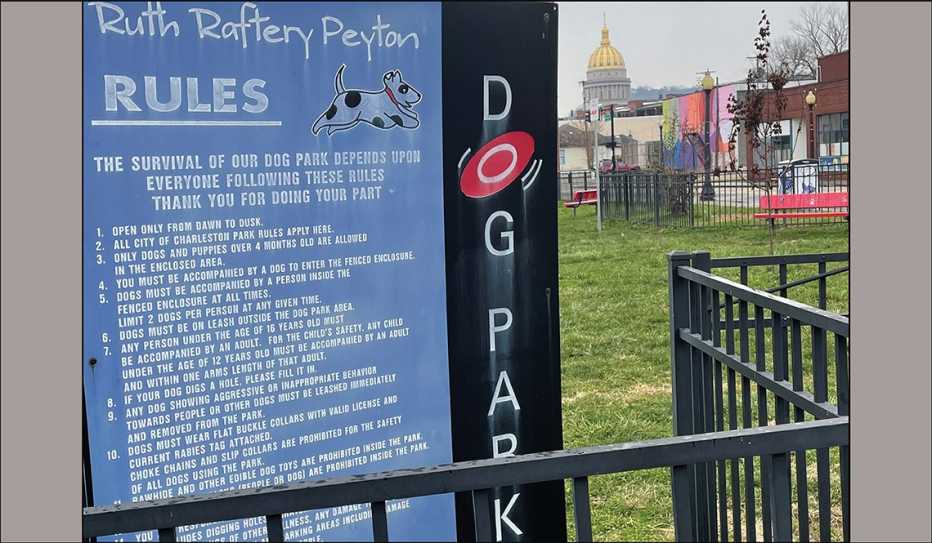AARP Hearing Center


Engaging through the "AARP Livable Communities Technical Advisors Program" (nickname: LC-TAP), livability experts provide both virtual and in-person guidance to AARP staff, local leaders and key stakeholders.
Since 2018, AARP has teamed up with some of the nation's leading authorities in the fields of housing, transportation, public spaces and economic development. These specialists consult with AARP state offices and local leaders to provide wide-ranging support — and lasting impact.
Here’s a sampling of just some of what’s been happening to advance policy change, support the implementation of age-friendly initiatives, and improve the built environment.


'Completing' Streets in Birmingham, Alabama
According to the 2021 Dangerous By Design report, Birmingham, Alabama, is one of the top 20 most dangerous metro areas in the United States for pedestrians. Birmingham’s poor ranking and numerous pedestrian fatalities led local officials to pass a Complete Streets ordinance in 2018. But when the city began implementing the ordinance, it was met with much public confusion.
Community members and businesses didn’t know what Complete Streets were. Some thought the term referred to road repairs, others thought the term had something to do with road teardowns. Few understood the positive economic impact a Complete Streets policy could have.
Recognizing these challenges, AARP Alabama asked Smart Growth America (which produces the Dangerous by Design report) to develop an educational program about Complete Streets. Beth Osborne, the director of Smart Growth America’s Transportation for America initiative, provided participants with an overview of Complete Streets, explaining their benefits and the strategies for achieving them. She presented photographs of local roads to show where the city has room for improvement.
Public officials held follow-up events with community members to discuss Complete Streets and the future of transportation policy in the city.
Birmingham’s Complete Streets Implementation Plan for bike routes, is 75 percent complete. Complete Streets Standards, a project to re-classify every street according to the ITE/CNU Walkable Urban Thoroughfares Manual to City and Development Projects, is 70 percent complete.
Also in the works is the City Walk Birmingham Master Plan, which will transform the area beneath the I-59/I-20 overpass in downtown Birmingham into a walkable district featuring recreational and green spaces.


(Re)legalizing Accessory Dwelling Units in Chicago
Accessory dwelling units, or ADUs, are small houses or apartments that are built as a secondary dwelling by homeowners of single-family lots. Such arrangements are common in Chicago, which has about 3,000 ADUs.
However, until recently, many if not most of the city’s ADUs were not legal.
In 2019, AARP Illinois began assembling a coalition with ULI, affordable housing groups, small builders and architects to update Chicago’s ADU code. Working with Eli Spevak (co-author of The ABCs of ADUs, a guide produced by AARP Livable Communities), the coalition helped frame policy arguments and provided technical information about ADUs to key influencers.
Going into 2020, the city took up a code update to legalize ADUs. Spevak helped AARP to understand each draft, figure out which parts to support, suggest places where AARP could recommend changes and determine when doing so wouldn’t be worth the fight. In December, Chicago adopted an ADU ordinance that applies in one-third of the city, representing about 45 percent of the population. In Chicago, the acronym ADU stands for "Additional Dwelling Units."
In nearby Evanston, Illinois, city leaders adopted an ADU code in November 2020 and later, with support from AARP, released the Evanston Guide to Accessory Dwelling Units.


Improving Connections In and Between Kansas City
Kansas City, Missouri, and Kansas City, Kansas, are connected by a rail-trail (i.e. a former railroad track that’s been converted into a walking trail.)
In 2019, AARP Kansas sought support from the public space experts of 8 80 Cities to address unsafe trail conditions that prevented many from venturing to the Strawberry Hill neighborhood and a nearby business district. An additional community concern is that some of the area is a food desert, with limited options for purchasing healthy food or any food.
8 80 Cities delivered two workshops about creating parks and public spaces to an audience made up of elected officials, city and county staff, community champions, and representatives from local service organizations and businesses. In addition to directly responding directly to the community’s concerns about the rail-trail and lack of food access, the workshops helped to broaden the attendees’ understanding of why public spaces are needed and how they need to be useful for people of all ages.
As a result of the workshops, several attendees, community members and local leaders formed the 8 80 Cities Coalition Group, which helped create The Merc Co+op grocery store and is working to install a bike repair station on the Strawberry Hill side of the trail. In 2020, the coalition’s advocacy work led to Kansas City, Kansas, and Wyandotte County adopting an ordinance to implement a Complete Streets policy.


Reigniting Public Spaces in Charleston, West Virginia
Located in the western half of West Virginia, Charleston is a small city of 50,000 residents. Charleston received a 2019 AARP Community Challenge grant to rehabilitate the long-neglected East End Community Park.
A children’s splash pad was installed, along with a walking track and community garden. The park is now a beautiful place for people to meet and gather.
Also in 2019, AARP West Virginia called on the urban planners of Team Better Block to help them bring more people to the East End. Among the implemented ideas: a dog park and dog prints painted on pavement leading to a bakery that serves treats for both people and pets. (The city’s second AARP Community Challenge grant, achieved in 2020, was used to improve the dog park.)
Discussions for future amenities in the East End and elsewhere include adding a parklet, installing traffic calming features to improve pedestrian safety and murals to brighten city streets.


Finding Missing Middle Housing in Omaha, Nebraska
With boomers retiring and downsizing their homes, and a high percentage of people living alone or as couples, Nebraska — like many other states — is feeling the acute lack of housing choice and affordability.
In an effort to address both, the state legislature passed the Municipal Density and Missing Middle Housing Act. Enacted in 2020, the legislation adjusts zoning regulations to allow for more small-scale, multifamily housing in single-family zones in 11 of the state’s larger cities, each of which is required to assess and report on their existing zoning and housing stock and then develop an action plan for implementing needed solutions.
AARP Nebraska has been working with the targeted communities to provide information about understanding of “Missing Middle Housing,” which is a term created by architect and urban designer Daniel Parolek, who was raised in Nebraska and is the founder of Opticos Design, based in Berkeley, California. (Click on this AARP Livable Communities link to find articles, photographs and more about Missing Middle Housing.)
Parolek and his firm shared a Nebraska-focused Missing Middle Housing presentation online, for viewing by leaders and residents throughout the state and elsewhere. To provide Nebraskans with local examples of Missing Middle-style housing, Parolek and the Opticos team created two self-guided walking tours: one in the historic Dundee neighborhood in Omaha, the other in Papillion, in a new development called Prairie Queen. (For more about Prairie Queen, see the free AARP publication Discovering and Developing Missing Middle Housing.)
AARP Nebraska will continue its housing-related education and outreach work as the housing action plans for the 11 target cities come on board over the next three to five years.
Key Takeaways
Some advice from the AARP Livable Communities Technical Advisors Program:
Engage local partners
Without committed, engaged local partners, success is not possible. Consider who needs to be a part of the effort. These might include subject matter experts, local leaders, planners, advocacy organizations, regional planning entities, elected officials or others. Such relationships are key, especially when planning an event, conducting outreach or rallying decision-makers. Clearly define what local partners, government officials and AARP needs to do to achieve the project.
Be (a little) opportunistic
Unexpected or emergent conditions can present an opportunity to move the needle forward on an issue or project. If there’s some location flexibility (for example, working in an adjacent neighborhood or at a statewide instead of community level), a move could increase the odds of assembling the elements needed to effect change. Large, urban areas typically have more of a regional impact, but they can require additional processes. In contrast, a smaller communities might be able to act faster and more nimbly. Working cross-jurisdictionally can increase the odds of success.
Trigger action and document results
Needed change rarely happens quickly. The inaction and delays that are par for the course can become an excuse for nothing getting done. At the same time, the full picture of impact can take years to see. Finding ways to trigger action (such as with resources from the AARP Community Challenge grant program) can keep the ball moving. It's both important and inspiring to document the results and impact of efforts.
Page published December 2021
Related
- Learn more 'Livable Lessons'

































































